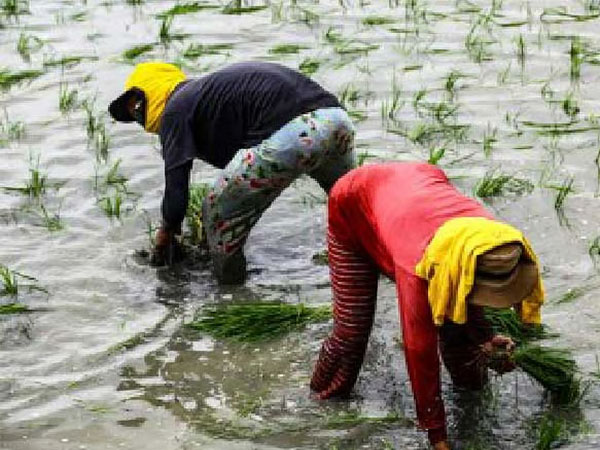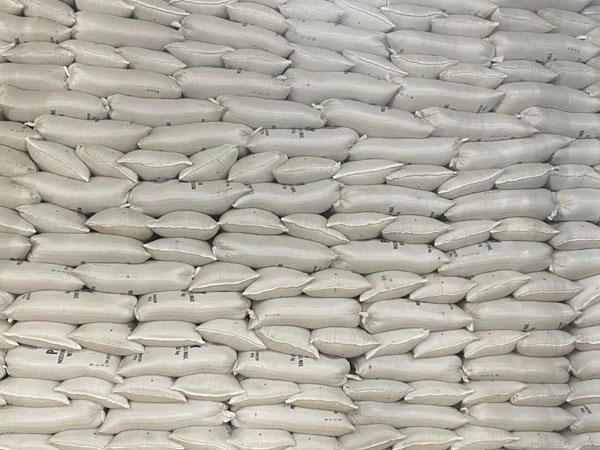 MANILA — The Department of Agriculture (DA) is optimistic that farmgate prices of palay (unhusked rice) will rebound in the coming wet harvest season, while also working to address changing consumer preferences for rice quality.
MANILA — The Department of Agriculture (DA) is optimistic that farmgate prices of palay (unhusked rice) will rebound in the coming wet harvest season, while also working to address changing consumer preferences for rice quality.
DA Secretary Francisco Tiu Laurel Jr. said on Thursday that they started seeing recoveries in some areas in Luzon.
He said prices in Nueva Ecija have already improved to PHP14 per kilogram for wet palay, up from lows during the dry season.
“Latest namin, nag-recover na ang Nueva Ecija at PHP14 na wet (The Nueva Ecija started to recover at PHP14 per kg. of wet palay). I was there the other day,” he told the Philippine News Agency in a Viber message.
“Dapat tumaas pa kaunti ang palay (The palay prices must increase further) by September,” Tiu Laurel added, noting the implementation of the 60-day temporary rice importation ban from September to October.
The country’s main harvest initially begins in September, and it peaks from October to November.
The import ban seeks to “protect” local palay farmers from unreasonable buying prices due to the high volume of rice inventory in the country.
The Samahang Industriya ng Agrikultura (SINAG) earlier warned of imported rice “flooding” that drove prices down to as low as PHP5/kg. in Nueva Ecija last month.
Tiu Laurel stressed that farmgate prices must exceed production costs, which the DA pegs at PHP13 per kg.
The Philippine Statistics Authority (PSA), however, showed that the palay production cost rose to PHP14.52/kg. in 2024, higher than the PHP13.54/kg. in 2023.
For SINAG, the farmgate price of fresh and wet palay should at least reach PHP18 per kg. to help farmers recover during the upcoming wet harvest, and has called for restoring rice tariffs to 35 percent from the current 15 percent to curb imports.
The tariff cut was implemented under Executive Order 62 in July 2024 to lower retail rice prices, a goal the DA says has been met with a PHP6–PHP7/kg. drop.
“While we welcome the import ban, the agriculture sector is steadfast in its appeal to restore rice tariffs to their original levels to discourage excessive importation and protect local producers,” SINAG Executive Director Jayson Cainglet told the PNA in a separate message.
The DA earlier said that the PHP6 to PHP7 per kg. target price drop in retail rice under the EO 62 has already been achieved.
Shifting rice preference
Meanwhile, the agency is also tackling shifting consumer tastes, directing farmers to plant high-yielding, good-eating-quality rice varieties.
Tiu Laurel said he has ordered the agency to address the changing preference of Filipinos when it comes to the quality of the country's main staple.
“I have given instructions just now to the whole DA to educate our farmers and plant only good eating quality rice with good yield,” he told the PNA.
Consultations in Iloilo revealed that lower-priced palay often comes from less preferred varieties like Rc10 (Pagsanjan type), which, despite high yields, have lower eating quality.
The Rc 10 is one of the early-maturing types that can yield up to 7.5 tons per hectare, according to the Philippine Rice Research Institute (PhilRice).
“It seems na nag-shift na ang preference talaga ng Pinoy market na gusto ng market ay magandang look and eating quality ng rice (that the preference of the Filipino market has been shifting, and now looks for a good appearance and good eating quality of rice),” he said.
In a separate interview, DA spokesperson Assistant Secretary Arnel de Mesa said the DA will assist local palay producers to replace unsatisfactory-performing rice varieties with high-yielding varieties.
“Iyong mga ini-import kasi natin iyong mga high-yielding varieties na masarap kainin (What we are importing are the high-yielding varieties which are of good quality),” he told the PNA.
“So, ang gusto ni Secretary para mabawasan iyong import, kailangan ang itanim din natin iyong mga kinakain na talaga ng mga Pilipino (the Secretary wants to reduce the import, that’s why we need to plant the rice varieties that the Filipinos are really patronizing).”
The DA, meanwhile, is yet to determine the high-yielding varieties to be promoted to local farmers starting next cropping season. (PNA)














© Copyright 2025 The SSResource Media.
All rights reserved.